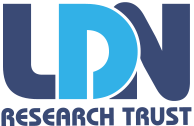
This single drug could dramatically reduce healthcare costs
Just the fact I am recommending a pharmaceutical product is astounding. Despite growing up as the daughter of a pharmacist and my first job being counting pills in my Mum’s suburban pharmacy in England, I avoid pharmaceuticals wherever possible. I am an advocate of getting to the root cause of your problem and finding natural solutions to support your body in addressing it. Masking symptoms with a drug that will likely have side-effects does not generate health.
Low-Dose-Naltrexone (LDN) is that rare pharmaceutical, a molecule that seems to work with the body rather than against it.
I first heard about LDN in 2022 when a functional medicine doctor in the UK recommended it to my ailing father. On researching it further I became amazed that it is not a household name. Actually, I’m not at all surprised given it is an uber-cheap, generic drug with a decades-old safety profile and negates the need for many of the most expensive drugs of our day.
What is Low-Dose-Naltrexone (LDN)?
Naltrexone is a pharmaceutical drug developed in the 1960s to block the effects of opiates. It is known as an opioid antagonist. It binds to the opioid receptors in your brain blocking any other substances or chemical messengers from binding. It is approved to treat opioid and alcohol abuse in doses of 50-200mg a day. It is not a narcotic itself.
LDN on the other hand is prescribed in tiny doses of 1-5mg a day. So it only binds to the receptors for a few hours, usually while you sleep, and then the magic is in the rebound effect. This effect was discovered in the 1980s by a clinician treating AIDS patients. He was using Naltrexone to treat their opioid addictions and found when he was weaning them off it there was a beneficial boost to their immune systems.
LDN costs as little as $20 a month and can be used indefinitely. Side-effects are minor such as difficulty sleeping and vivid dreams, but usually resolve within a couple of weeks of use.
How Does LDN Work?
It’s helpful to understand how LDN works so that you can see why it is useful for so many conditions. The biochemistry is a little complicated (and still being studied) but here’s my attempt at a simplified version:
Receptor site binding to both the opioid receptors in your brain and the toll-like receptors (TLRs) in certain immune cells (macrophages and microglia)
Upregulation of endorphins as your body is tricked into thinking it’s not producing enough. Endogenous endorphins are the body’s natural pain relievers.
Immune cell inhibition from blunting the TLRs which suppresses immune cell (over)activation and reduces the production of pro-inflammatory signaling molecules.
Decreased inflammation and pain resulting from the combination of increased endorphins paired with a decrease in pro-inflammatory signaling molecules which further impacts immune function, cell growth and pain response.
What Conditions Does LDN Work For?
LDN has been shown to have a profoundly positive impact on a range of autoimmune and inflammatory conditions including most recently Long Covid. I’d highly recommend the aptly named book “The LDN Book” which is a compilation of chapters written by different doctors and pharmacists who are experts in their fields. There are chapters dedicated to Multiple Sclerosis and Lupus, Inflammatory Bowel Disease (Crohn’s and Ulcerative Colitis), Chronic fatigue syndrome and fibromyalgia, Restless Leg Syndrome, depression, autism and cancer. The book also includes a detailed history of LDN, and helpful appendices to assist you in discussing its use with your doctor with answers to a range of common questions you may have.
This summary diagram was taken from one study available in PubMed. There are others. But due to the economics, it’s unlikely any major placebo controlled double-blind trials will be funded. This is a terrible shame as employers, health plans and individuals can not only save the cost of the many expensive drugs being used to treat these conditions (and their nasty side effects) but LDN can actually support a full reversal of disease and improve the quality of life.

How Can I Find Out More?
 The LDN Research Trust was founded in 2004 by Linda Elsegood who used LDN to reverse her severe multiple sclerosis and wanted to get the word out. The organization is now recognized around the world as the leader in LDN information and for the funding of studies and clinical trials.
The LDN Research Trust was founded in 2004 by Linda Elsegood who used LDN to reverse her severe multiple sclerosis and wanted to get the word out. The organization is now recognized around the world as the leader in LDN information and for the funding of studies and clinical trials.
You can find a wealth of information on the website such as the very long condition list for which LDN has been found useful. Links to presentations and doctor interviews. High quality documentaries – look under Media and scroll down to start with The LDN Story. You can also find resources such as conferences, dosing guidelines, lists of doctors around the world who will prescribe it, pharmacists, access to telemedicine if none of the doctors live near you, and more. There are now three volumes of The LDN Book you can pick up wherever books are sold.
If you’ve used LDN to treat a condition or know of someone who has please share your story in the comments!



